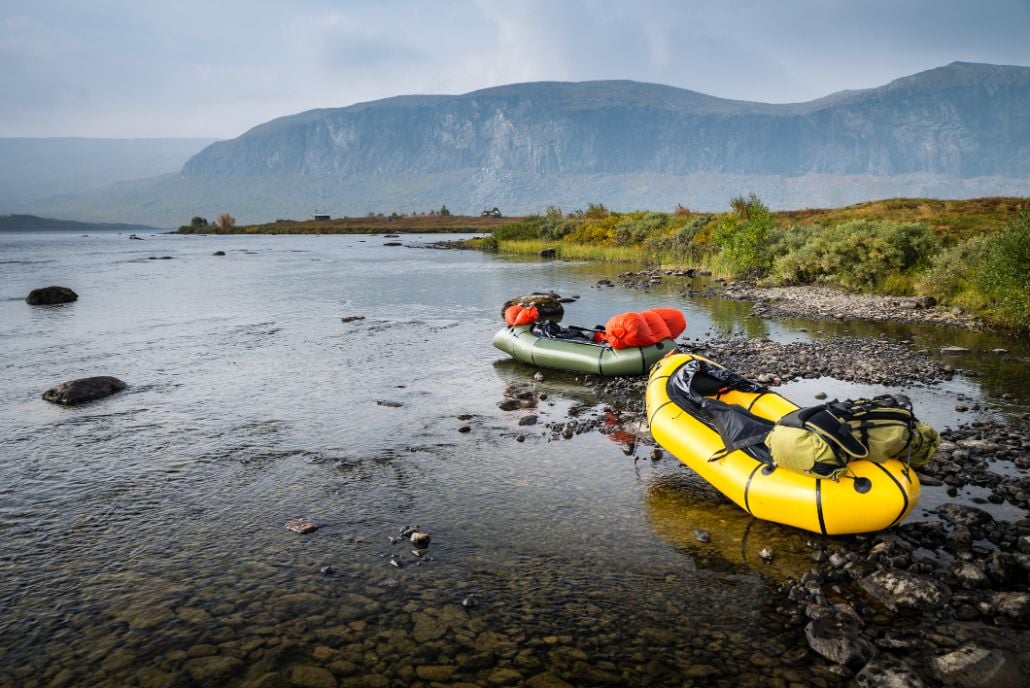Packrafting is for people who want to be frogs. Before you think we're crazy, let us explain. Have you ever had to walk, or even cycle, around a body of water? Have you ever gone kayaking and had to drag your craft on a long portage? Packrafts were created for people who want to be amphibious (just like frogs). Instead of just sticking to land or water, and being rather inconvenienced if you come across the other, you can have both.
What is Packrafting?
A packraft is just that: a raft you can pack up small enough to carry in a rucksack. But don't get it mixed up with an inflatable kayak. A packraft is generally far lighter, more durable and packs down even smaller. They are designed specifically for being carried. Your average packraft weighs only 3-4 kgs.
A packraft can open up a whole new world of outdoor possibilities.
Although you can get white water packrafts, specifically for taking on high class rapids, people also commonly used packrafts as a way to explore a river or to go from A to B in areas with an even mix of water and land. Think places like Scotland or Norway.
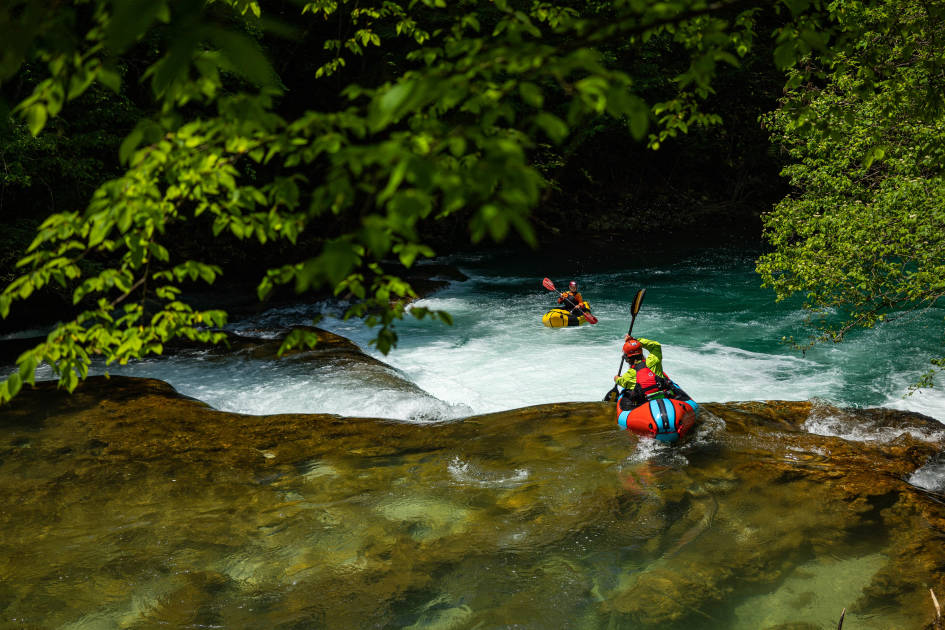
What's cool is you can suddenly access areas you wouldn't normally be able to reach. So a packraft can open up a whole new world of outdoor possibilities.
You can load up your rucksack with a few days' worth of food, plus a packraft, and head out into the wilderness. Suddenly you're on an expedition, not just a hike. And by land or water you can reach your destination. Or you could pair it with cycling (sometimes called bikerafting). For example, cycling in Greenland until you reach a fjord, then swapping to a packraft, loading your bike on the front and paddling onwards. We think that sounds awesome.
How Does it Work?
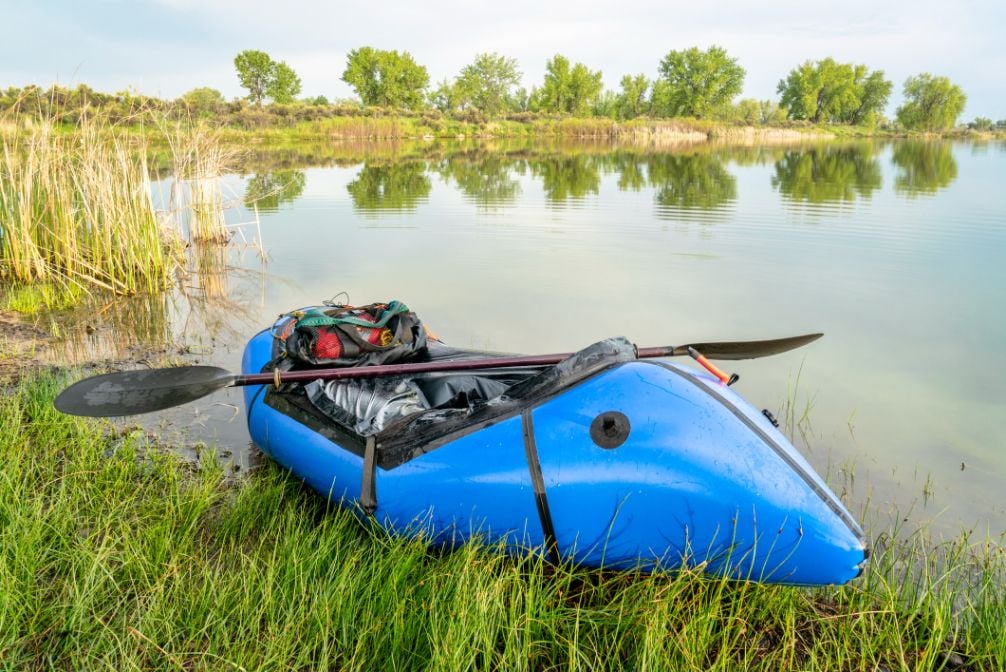
Packrafting is very simple. You carry all of your kit (in packed up form). You then walk to the edge of the water and make your transition: inflate your packraft, assemble your paddle and stash your kit in the raft. Then carry on, this time using your arms to travel instead of your legs.
Packrafts are known as very forgiving crafts. They are wide and buoyant, meaning it's easier for beginners to have a go without spending all their time in the water. That's good news too if you've filled up your packraft with kit that you'd rather keep dry. They are perfect for multi-day expeditions. It's generally considered that packrafts originated in Alaska, where the landscape made portable boats a very useful bit of kit to have.
When you've finished paddling across your lake or along your river, simply unload your kit and deflate the packraft. Pack it all back up and continue hiking or biking, feeling very smug that you've just crossed something most people had to go around.
What Should I Wear?
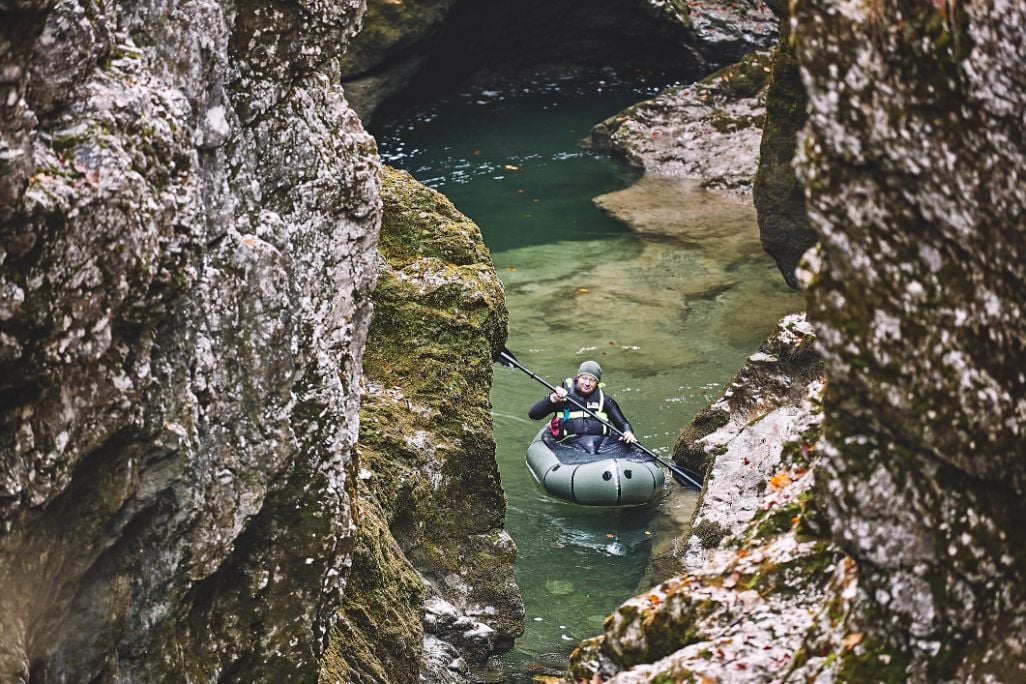
If you're going packrafting, you're going to be spending half your time on water and half on land. So the question most people ask is: what should I wear? Do I need to bring a change of clothes especially for rafting? The answer is not in the weather, but in the temperature of the water.
If there is a low chance of you falling in and the water is warm, it's fine to dress for hiking and maybe wear waterproofs if you want splash protection. A pair of warm, waterproof gloves wouldn't go amiss in some places either. Bring a pair of sandals or wetsuit boots to stop your out-of-raft shoes from getting wet.

In colder waters, a drysuit comes into its own. Yes, they're heavy and bulky compared to normal clothes, and you can't double up and wear it on land (at least, not comfortably). But, you'll be incredibly thankful for it if you do end up in icy waters. Make sure you're able to undo your zip yourself though, even when your hands are cold.
A wetsuit is a potential option, but often not a practical one. Changing in and out of a wetsuit is not the easiest task. They also take much longer to dry than a dry suit and you'll have to carry that heavy, wet wetsuit somehow. That said, if you're going to spend most of your time in or on the water - say by combining packrafting with swimming or canyoning - then it could be a good choice.
Equipment you Need to Take Packrafting
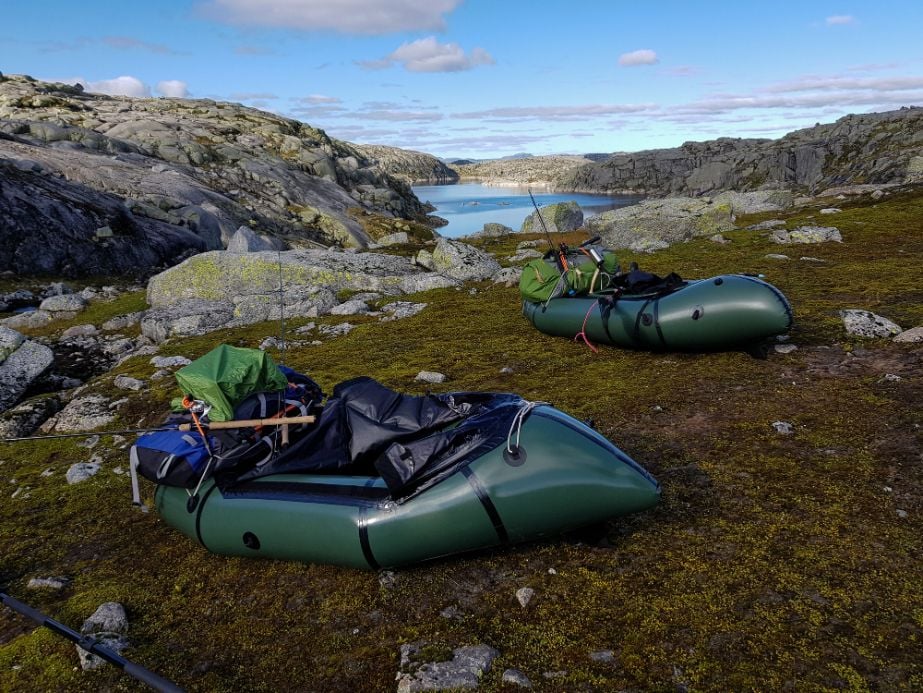
First and foremost, you need a packraft. Well, duh. There are a few main brands that manufacture packrafts and ship worldwide - Alpacka Rafts have been going the longest. The particular model you choose will depend on your needs. For example, will you be on relatively flat water, with a bike strapped to the front of your raft, or hiking into the middle of nowhere so you can have some Class 4 rapids all to yourself. A packraft comes with the raft itself, a pump - very important - and a paddle that splits into pieces. It's a sad day when you arrive at the water's edge, only to realise you've left the pump behind. You'll struggle to inflate the whole packraft using only air from your lungs.
Next, you'll need some safety gear, like a PFD (personal floatation device) and a helmet. Your PDF will help to keep you buoyant if you do accidentally go for a swim. A helmet isn't always necessary, but it is a good idea in rocky rivers. Ask yourself: if I fall out, is there a chance I will bang my head? If not, great, but in shallow rivers and narrow gorges it's well worth it to keep yourself safe.

Some other useful bits and pieces will keep you extra safe. Like bringing a knife to make sure you can cut free of entanglement. For example, if you somehow get a leg tangled in a rope that's scarily holding you underwater. Obviously, not just any knife will do for this, so put your kitchen cleaver back in the drawer and look for paddling-specific knives. A throw line is great for being able to rescue a friend - and you should be with at least one friend, something we'll talk about more soon.
A throw line is a floating rope that comes in a small bag. You throw the bag to your stuck friend and keep hold of the end of the rope. If it goes right, your friend can grab hold of the rope while you pull them out. But it's very much worth practicing the throw if you're going to pack one.
A packraft is just that: a raft you can pack up small enough to carry in a rucksack. But don't get it mixed up with an inflatable kayak.
Another key item to remember is a repair kit for the packraft. Just as you need to be able to fix your tent if it's your only form of shelter, it's game over if you can't inflate your packraft. And contrary to popular belief, you can't solve every problem with duct tape. If you've hiked all this way with it, you may as well make sure you can use your packraft. It's pretty useless and quite heavy otherwise.
Finally, remember you need to also bring all the non-paddling part of the expedition, whether that's a hiking rucksack or a bicycle. You'll want some dry bags to put it all in too (not your bike), while you're on the water. It's recommended that you keep a few essentials on your person, just in case you get separated from your raft. Especially a tracker beacon, if you have one.
Safety on a Packraft
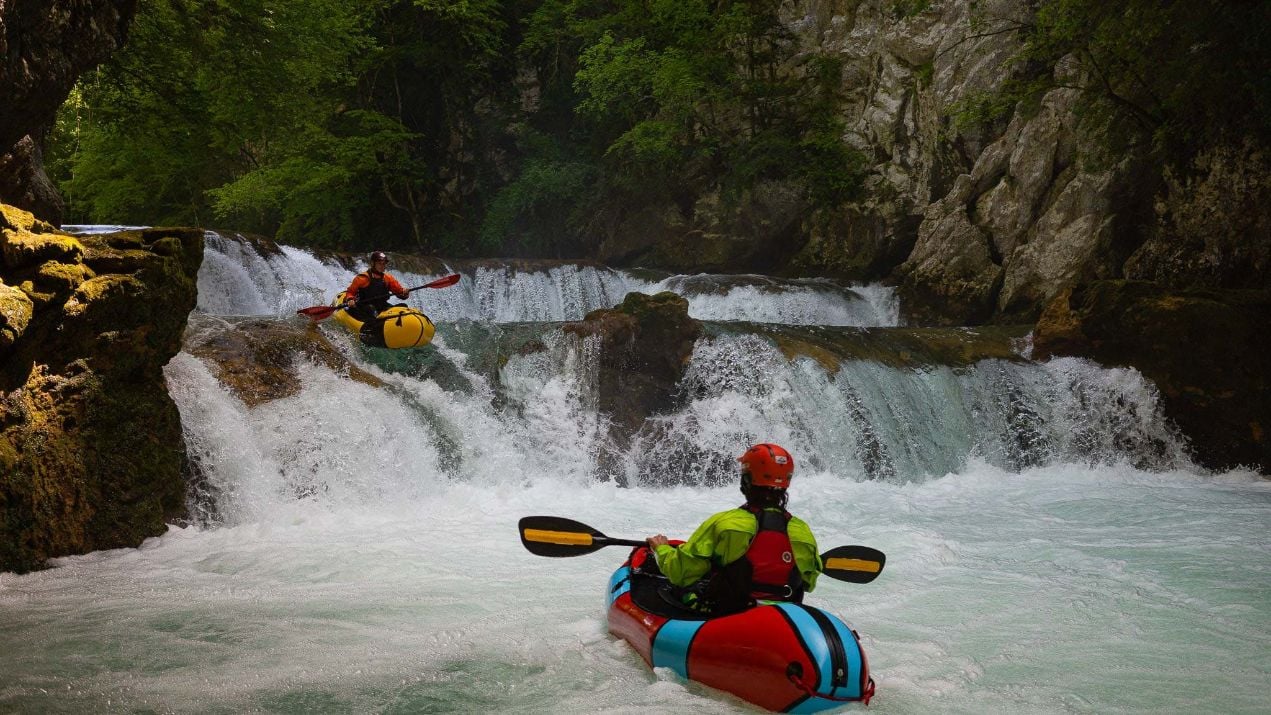
This is the section where we scare you by listing a whole load of things that could go badly wrong while packrafting. Please do not be put off - if you examined the worst case risks of leaving the house each morning, you might never get out of bed. But definitely do be aware of the main risks you might encounter packrafting and how to mitigate them. We'd rather you went into this eyes open.
As a beginner, it is well worth starting out by learning from someone more experienced. Some people will be lucky and know packrafters already. Others can join a guided group or take a course to learn the basics in a low risk environment.
A Pair is Safer than Solo
It sounds cool, saying you're going on a solo adventure (or sad violins). But as a beginner, it's a very good idea to go with other people. In fact, even experienced packrafters will go with at least one buddy. This means that, if something does go wrong, you'll have someone there to help you, pull you out, sound the alarm, video your harmless fails and share your last KitKat.

Water can be cold and can make you very cold
Hypothermia is a fairly common word amongst hikers, referring to the slow onset of cold from exposure. You can definitely still get that packrafting. Just fall into the water, get out and be slowly chilled by cold weather, the wind and damp clothes. But there's another type of hypothermia, the kind that puts your body into shock by dunking it in very cold water. If there's a chance you might end up going for a swim, and the water temperature is below 15 degrees C, make sure you have appropriate kit on to stay warm.
You can get trapped in the water
There are many hazards in a water course, particularly rivers with any class of rapid. If you like the idea of white water, it's worth looking at a swiftwater rescue or awareness course designed to help paddlers understand the risks and where they normally occur. Some things are fairly common sense, like getting caught up in fallen trees or branches under the water. Others, like eddies and weirs could look fine but trap a paddler in their currents.
Where can I go Packrafting?
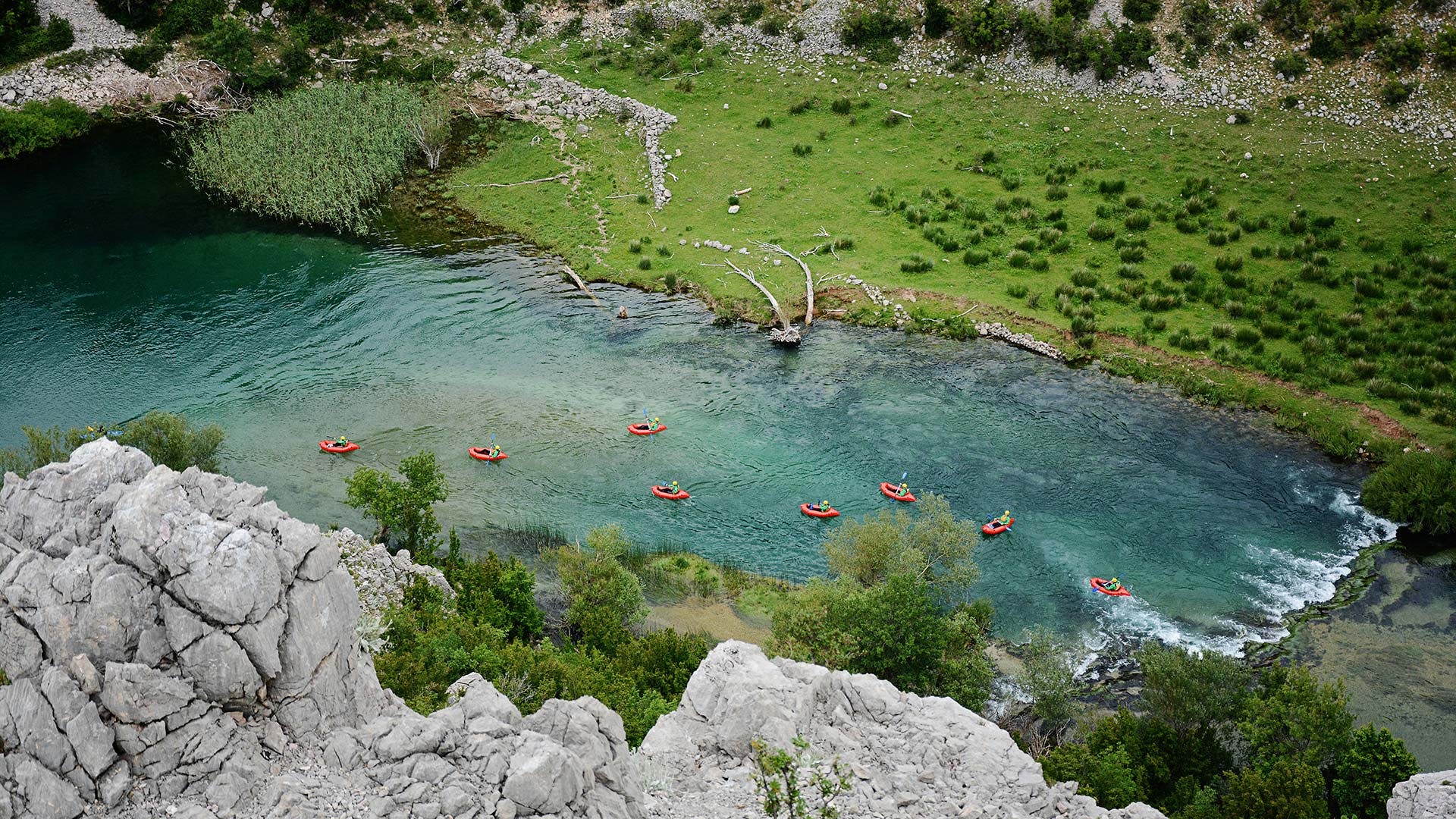
For the best places to go packrafting, look for the combination of land and water. Usually, that's around the edges of the land: where it splits into islands, inlets and fjords. But it might be the opposite too: an area of land divided by hundreds of lakes - or thousands in the case of Finland and its 100,000+ lakes. From an excited glance at the world map, you might choose the Tara River in Montenegro, the fjords of Norway, the mountains of Croatia or the North West Coast of Scotland.
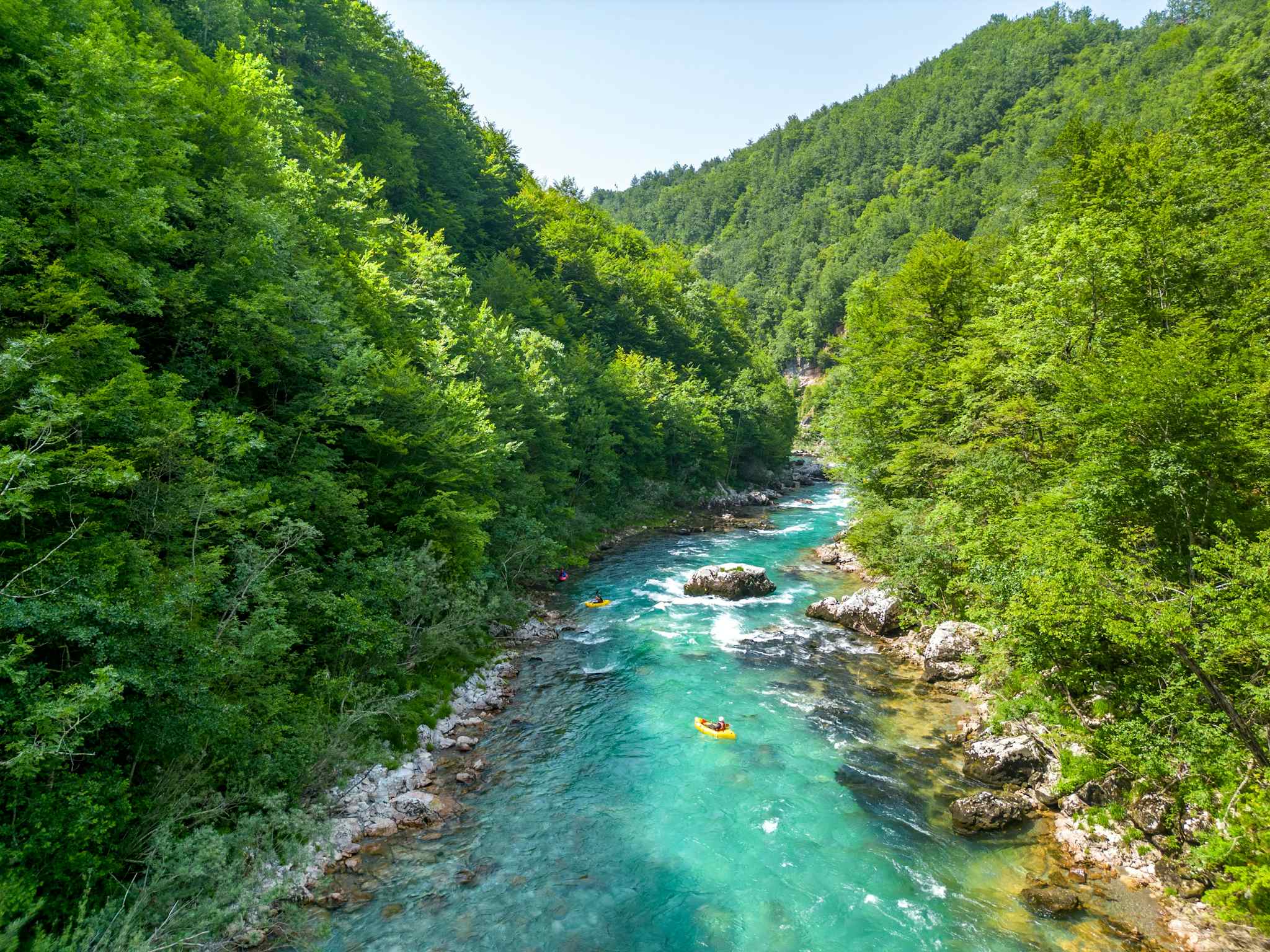
Or maybe you're all about rivers and using these blue highways to traverse a landscape otherwise uncrossable. For example, you might spend days in the deepest parts of New Zealand's south island a very long way from civilisation. Or perhaps Patagonia, Georgia, Iceland or Alaska.
Being a beginner doesn't mean you can't go anywhere exciting. In fact it's a great excuse to go and have a packrafting adventure with a local guide, who can teach you everything you need to know while you get experience. Plus if you join a group, all of a sudden you'll have packrafting friends to go with on your next packrafting expedition.
Ready to have a go at packrafting? Or fancy rafting without having to carry your boat? Here is our collection of white water rafting adventures from around the world.


